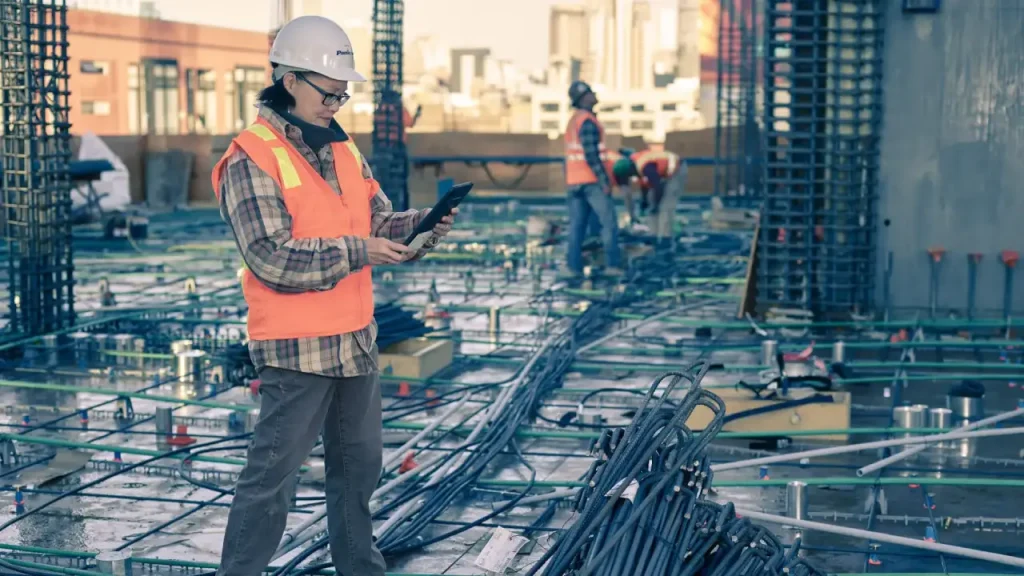
Introduction
The construction industry is going through a phase of digitization. Building Information Modeling (BIM) has become the mainstream in the AEC industry. BIM has paved its way into the construction sector by offering numerous benefits, overcoming the challenges faced by the industry. It makes use of digital models for carrying out projects, thereby eliminating traditional 2D drawings for creating plans. BIM helps in reducing wastage of resources and materials and increases safety and productivity on construction sites. It helps generate better estimates and provides a good ROI for projects. An integrated approach to building construction management results in better communication among the members of a team, thus enhancing overall efficiency
In addition to all this, since it enables real-time collaboration with multiple teams, complex designs can be made simpler with BIM
The construction industry is going through a phase of digitization.
The construction industry is going through a phase of digitization. BIM (Building Information Modeling) is the new buzzword in this sector, as it is a methodology for designing and constructing buildings. In simple terms, it refers to a digital representation of the physical and functional characteristics of a building.
Building Information Modeling (BIM) has become the mainstream in the AEC industry.
Building Information Modeling (BIM) has become the mainstream in the AEC industry. The use of BIM requires a digital representation of the design, construction, operation and maintenance of a facility, which allows all disciplines to work together in an integrated manner. This can significantly reduce errors and rework, increase productivity and improve communication between project teams.
BIM has paved its way into the construction sector by offering numerous benefits, overcoming the challenges faced by the industry.
The construction industry is one of the most important parts of the economy. It contributes about 7% to the GDP and employs around 10% of the total labor force in India. Since it plays a huge role in shaping our economy, it is important that this sector be digitized as much as possible so that it can be streamlined and efficient.
There are several benefits that can help improve efficiency in this sector if BIM is implemented effectively:
- reducing wastage of resources and materials as they are planned beforehand with accurate visualization tools
- improved coordination between all stakeholders involved in projects (designers, builders, contractors etc.)
- increased safety due to better communication between stakeholders
It makes use of digital models for carrying out projects, thereby eliminating traditional 2D drawings for creating plans.
BIM is a digital representation of a building that uses 3D models, not 2D drawings. BIM enables the use of virtual representations of buildings and other construction projects to manage information throughout the entire project lifecycle. It also helps in reducing wastage of resources and materials, as well as increasing safety and productivity on construction sites
BIM is an IT-enabled process that uses computer-aided design (CAD) software to create three-dimensional (3D) digital models. This model can be used for all aspects of the project management cycle: design, engineering, construction planning commissioning etc., thereby eliminating traditional 2D drawings for creating plans
The most important advantage associated with BIM implementation is its ability to handle large amounts of data using parametric modeling techniques which allow users to store information related to cost estimation; sequence analysis; schedules; cost estimating etc., in one central database without loss or distortion
BIM helps in reducing wastage of resources and materials and increases safety and productivity on construction sites.

The use of BIM tools in the construction industry has been found to reduce waste of resources and materials. It makes it possible for the contractors, subcontractors, and consultants to have access to real-time information regarding the quantity of material used in each stage of construction. This helps them work more efficiently as well as reduce cost significantly.
The comprehensive information provided by BIM helps project managers plan ahead and make informed decisions on site activities like scheduling, procurement, and equipment deployment. This improves safety standards on job sites since they are able to anticipate potential risks beforehand or implement preventive measures if any unforeseen circumstances arise during a project’s execution phase.
It helps generate better estimates and provides a good ROI for projects.
Digitalization in the construction industry creates an integrated approach to building construction management. It helps generate better estimates and provides a good ROI for projects. The ability to visualize the project before it has been built is one of the biggest benefits of digitization, along with reducing wastage of resources and materials, increasing safety and productivity on construction sites.
An integrated approach to building construction management results in better communication among the members of a team, thus enhancing overall efficiency.
BIM is an integrated approach to building construction management. It enables real-time collaboration with multiple teams and can be used to design, visualise and collaborate on construction projects. BIM helps in reducing wastage of resources and materials by providing a single point of access for all stakeholders involved in the project. This saves time by eliminating the need for data collection from different sources as well as manual data entry.
With BIM, designing, visualizing and collaborating on construction projects becomes quicker, easier and more effective than ever before.
- BIM enables better collaboration with multiple teams.
- BIM allows for real-time collaboration.
- BIM is more flexible and adaptable to change.
- BIM is more efficient, reducing costs and accelerating project delivery times.
- BIM is cost effective, allowing you to make informed decisions by considering the full picture of your project’s impact at each stage of its lifecycle – from design through to commissioning and beyond – before committing to a particular approach or solution in order to reduce risk and ensure long term savings
Since it enables real-time collaboration with multiple teams, complex designs can be made simpler with BIM
BIM is a collaborative tool. It allows for real-time collaboration between the design team and other stakeholders, such as architects, engineers and contractors. This enables complex designs to be made simpler in terms of understanding the overall scope and cost. BIM also helps facilitate communication with multiple teams involved in different aspects of the project by sharing information about models such as 3D CAD models or even animations over an intranet.
The building information modeling process itself has been simplified due to technology advances like cloud computing which now allow users to access data from anywhere and anytime – something that was not possible before digitization came along.
Construction Industry is getting digitized.
Construction Industry is getting digitized. BIM (Building Information Modeling) is a tool that helps to plan and manage construction projects. It provides 3D models of a building or structure, which can then be used by engineers to design the project from scratch.
BIM helps in reducing wastage of resources and materials and increases safety and productivity on construction sites. With BIM being the future of construction, it is making its way into many industries including aerospace, automotive, healthcare, power generation etc..
Conclusion
The construction industry is going through a phase of digitization. Building Information Modeling (BIM) has become the mainstream in the AEC industry. It makes use of digital models for carrying out projects, thereby eliminating traditional 2D drawings for creating plans. BIM helps in reducing wastage of resources and materials and increases safety and productivity on construction sites. It helps generate better estimates and provides a good ROI for projects. An integrated approach to building construction management results in better communication among the members of a team, thus enhancing overall efficiency. With BIM, designing, visualizing and collaborating on construction projects becomes quicker, easier and more effective than ever before
Follow us to stay updated on LinkedIn, Facebook, Instagram and Twitter.

